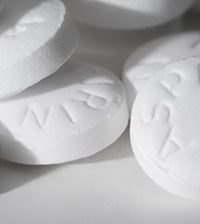- Fragments of Bird Flu Virus Found in U.S. Milk Supply
- There’s an ‘Epidemic’ of Loneliness Among U.S. Parents, Poll Finds
- Infertility Is Rising Among Young Married Women
- New Rules Mean 3.6 Million Americans Could Get Wegovy Via Medicare, Costing Billions
- ‘Dream It, Be It?’ Study Finds Teens Who Focus on Life Goals Often Succeed
- Trying ‘Magic Mushroom’ Drug to Ease Depression? It Has Side Effects
- $282 Billion: What Mental Illness Costs America Each Year
- Black, Hispanic Americans Getting Savvier About CPR
- Kids With Common Skin Conditions Face Stigma, Bullying
- Science Reveals How Aspirin Prevents Colon Cancer
Brain-Training Device May Ease Stroke Paralysis


Scientists are testing a new thought-controlled device that may one day help people move limbs again after they’ve been paralyzed by a stroke.
The device combines a high-tech brain-computer interface with electrical stimulation of the damaged muscles to help patients relearn how to move frozen limbs.
So far, eight patients who had lost movement in one hand have been through six weeks of therapy with the device. They reported improvements in their ability to complete daily tasks.
“Things like combing their hair and buttoning their shirt,” explained study author Dr. Vivek Prabhakaran, director of functional neuroimaging in radiology at the University of Wisconsin-Madison.
“These are patients who are months and years out from their strokes,” Prabhakaran said. “Early studies suggested that there was no real room for change for these patients, that they had plateaued in the recovery. We’re showing there is still room for change. There is plasticity we can harness.”
To use the new tool, patients wear a cap of electrodes that picks up brain signals. Those signals are decoded by a computer. The computer, in turn, sends tiny jolts of electricity through wires to sticky pads placed on the muscles of a patient’s paralyzed arm. The jolts act like nerve impulses, telling the muscles to move.
A simple video game on the computer screen prompts patients to try to hit a target by moving a ball with their affected arm. Patients practice with the game for about two hours at a time, every other day.
Researchers also scanned the patients’ brains before, during and a month after they finished 15 sessions with the device.
The more patients practiced, the more they were able to train their brains, the researchers found.
The findings were scheduled for presentation Monday at the annual meeting of the Radiological Society of North America, in Chicago.
Strokes occur when blood flow to the brain stops. This happens because a blood clot blocks a blood vessel in the brain or a blood vessel breaks in the brain. Strokes often cause problems with movement and language.
Though it’s an early look at evidence supporting the therapy, one expert who was not involved with the research said the results looked promising.
“Stroke is the largest cause of disability in the country,” said Dr. Rafael Ortiz, director of neuro-endovascular surgery and stroke at Lenox Hill Hospital in New York City. “Fifty percent of stroke patients end up with severe disability, and that’s out of 800,000 strokes that happen a year,” he said. Better kinds of rehabilitation for stroke patients are desperately needed, he added.
“Using therapies like this, we can offer hope to patients, even six or twelve months after their stroke,” he said.
The brain has two sides, or hemispheres. Researchers say that what seems to be happening is that the side of the brain that wasn’t damaged by the stroke learns to take over many of the functions lost on the affected side.
And the more patients are able to recruit the unaffected side, the better their progress, Prabhakaran said.
Some, but not all, of the positive brain changes remained even a month after patients had finished therapy. Researchers think maintenance sessions may be necessary to help people keep their gains.
Patients with mild to moderate damage seem to get the most help from the device, he added. Patients with milder impairments were able to increase their speed on a task that required them to move pegs on a board. Patients with moderate damage were able to recover movement and strength.
The study is still in its early stages. Researchers said they won’t know for sure how well it works or how useful it may be until they’ve tested it on more patients. Prabhakaran said he hoped to recruit 44 in total.
Data and conclusions presented at meetings are typically considered preliminary until published in a peer-reviewed medical journal.
More information
For more on stroke rehabilitation, see the National Institute of Neurologic Disorders and Stroke.
Source: HealthDay
Copyright © 2024 HealthDay. All rights reserved.










